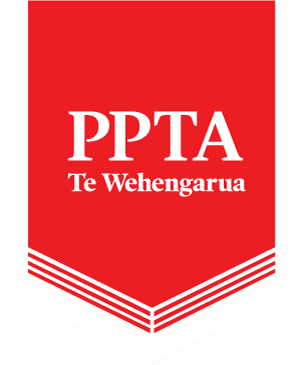High trust system a no-brainer for Te Kura
PPTA News talks with Te Aho o Te Kura Pounamu members Nicholas Shaw and Bruce Ngataierua about the school’s professional growth system.

Te Aho o Te Kura Pounamu (formerly the Correspondence School) has switched to a high trust system. PPTA members Nicholas Shaw and Bruce Ngataierua share their experience with the old and the new.
From lighthouses and remote sheep stations to online learning
Nicholas Shaw has been teaching mathematics at Te Aho o Te Kura Pounamu (Te Kura), formerly The Correspondence School, since 2002 and taught in a variety of New Zealand schools before that.
He has seen a lot of changes in distance learning over the years.
"In the olden days, the Correspondence School posted work out with an individualised typed or handwritten letter to the students who mostly lived in lighthouses or on remote sheep stations. There are now many different pathways to enrol with Te Kura. We have approximately 11,000 students enrolled with us and a very small number are with us for isolation reasons," he said.
Learning platforms are accessed through an online learning platform (like Moodle) and the school offers some online synchronous teaching.
"It is a challenging job because we assess each student individually and try to fit a programme of learning accordingly. For example, I have about 150 subject students for my main subject mathematics and nearly all of them are working on different individualised programmes of learning."
Previous system caused a great deal of stress
Before the new system was negotiated for Te Kura, teachers had to prove they were competent and doing a good job by providing a portfolio of evidence to management. This portfolio had to include evidence for all six teaching standards for each year over a three year period.
"It was not unusual for a teacher to spend many hours putting evidence together in a portfolio either online or paper based. I believe it was detracting from the job and was a great source of stress within the school," he said.
A high trust model
After a lot of talk on the shop floor about the stress and work involved in the evidence-based teacher registration process, Nicholas put his name forward to join PPTA, NZEI and Te Kura management in a working group to investigate a new way forward.
The working party discussed the issues with the old system and agreed Te Kura would move towards a high trust model. There is now a presumption that a teacher is competent and doing a good job, and a portfolio of evidence is no longer required, he said.
"From a teaching point of view a big source of stress has been removed. Teachers can focus on what they do well, which is teach, rather than spend time collecting evidence to prove they are a competent teacher," Nicholas said.
It’s early days but the new system seems to be going well, he said. "Staff and management seem to be happy with the new system.
"It is a no brainer why would you not choose a high trust model? Collecting evidence for a portfolio is not a good use of teacher time."
Inconsistencies with the old system
Bruce Ngataierua is the Te Aho o Te Kura Pounamu Hastings sub-branch chair. Based in Hawkes Bay he teaches chemistry at senior level and is also senior teacher in charge of the region’s junior science programme.
"I’ve taken that on this year, it keeps me pretty busy," he said.
Bruce has just updated his registration through the old appraisal system and is looking forward to experiencing the new one. He believes one of biggest issues with the previous system was inconsistency.
"Nothing was clearly spelled out in terms of what had to be done. There seemed to be different approaches in different regions," he said.
In the old process the regional manager approved teacher appraisal materials and each had a different way of doing it. Some required lots more material than others. Bruce had differing experiences in different workplaces. In some the appraisal process was quick and easy and in others it could take him a whole week to pull the material he needed together.
Focusing on PLD
Bruce understands the new high trust system is much more simplified and links in with staff PLD.
"Each year we have goals we set for ourselves and with our schools that we work towards. They are set in consultation with our managers and form part of our PLD throughout the year. The new system is a way of linking these together."
He has looked through the new document and thinks it reflects concerns about the old system put forward by PPTA members.
"It takes the pressure of and turns it into something productive and useful," he said.
The feedback he has heard from the people who have used the new system so far is that it’s a process they get more out of. "With the old one they were over it. This is meant to be a reflection of the last three years. It can’t just be an academic process. We need to be able to collectively reflect on our own professional development," he said.
Bruce would like to see the Te Kura system instituted nationwide, in a way that is flexible for staff who teach in the classroom.
"It is important to overcome some of the unproductive bits and pieces and still have a process that is robust. PPTA has done a lot of work making our system into something more practical and I would like to see that across all schools," he said.
For more information see Removing appraisal – a workload reduction win (ppta.org.nz)
Last modified on Wednesday, 17 May 2023 09:11
